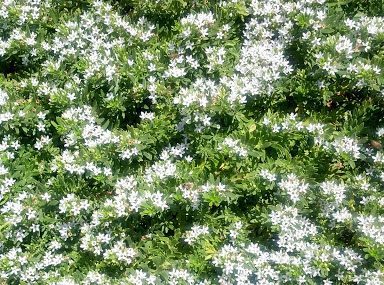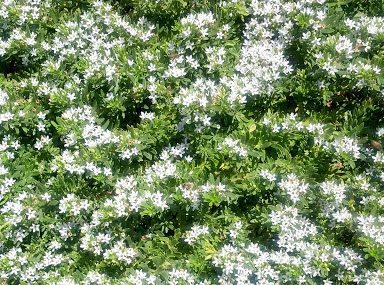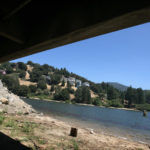
When you make guacamole, adding chopped cilantro leaves from your garden is a nice touch. And, as it happens, no plant is more easily grown from seed than cilantro. It has been cultivated for thousands of years, with its seeds found in Neolithic vessels in a cave in Israel, as well as in Tutankhamen’s tomb, testifying to its Middle Eastern origins and dry climate habitat that resembles our own. Manna, that fell from heaven in the Sinai Desert, resembled cilantro seed, which is also known as coriander (Exodus 16:31).
Cilantro has the distinction of having two equally common names. While “coriander” (its botanical name is Coriandrum sativum) typically refers to its seeds, it is also sometimes used in reference to the plant itself. The name “cilantro,” on the other hand, is more closely associated with the plant’s stems and leaves.
The origin of the word coriander is found in the ancient Greek word for bedbug, whose smell, apparently, is similar to that of the plant. Coriander/cilantro is not uniformly utilized for culinary purposes since a large percentage of people find its taste offensive. There is a genetic component to this since identical twins, for example, generally react the same — whether favorably or unfavorably — to coriander flavoring while fraternal twins only do so about half the time. Moreover, nearly a quarter of adults, in one study, were found to be allergic, to one degree or another, to this plant.
Even if you do not find coriander/cilantro appealing as a kitchen spice, you may still wish to plant it in the garden for its pest control properties. In the Salinas Valley, coriander and alyssum — due to their attractiveness to aphid-eating hoverflies — were interplanted with lettuce. The hoverflies — metallic green or blue and easily mistaken for small, hovering bees — were attracted to the coriander flowers, noticed the aphids on the adjacent lettuce, and laid their eggs among them. Each larva that hatched from a hoverfly egg gobbled up as many as 150 aphids per day before maturing into an adult. Thus, if you want to keep aphids away from your roses or vegetable garden, planting cilantro would be a wise practice to adopt. Other plants that attract hoverflies include coreopsis, cosmos, daisies of all kinds, dill, fennel, feverfew, lavender, marigolds, mints, statice (Limonium spp.), sunflowers, and zinnias.
Coriander seeds came to mind the other day when I was learning about a new development in pencil manufacturing. Several companies are now producing biodegradable pencils that, when reduced to stubs, may be turned upside down and inserted into the soil of a flower pot. Where the eraser is normally found, seeds are enclosed in a capsule which, once watered, begins to disintegrate, even as the seeds inside begin to sprout. Coriander seeds are among the seed selections of several seed pencil companies, testifying to their ease of germination.
The most prominent seed pencil manufacturer is Sprout, a Danish company which has sold millions of pencils and will customize a company logo and message on them. Seed pencils, both regular and colored, present an alternative to plastic pens where advertising and company promotion are concerned, but they are also sold in 8-packs, on Amazon and eBay, to individual consumers. Sprout has also developed a makeup seed pencil — not yet available in the USA — in “eyeliner, lipliner and eyebrow liner variants.” For more information, go to sproutworld.com.
Tip of the Week: David Fisher, who gardens in La Habra, is planting a hillside with flats of myoporum and has a question about mulch. He is putting down coir netting to control erosion and wants to know at what stage, if any, mulch should be brought in. Coir, a fiber extracted from coconut husks, while providing erosion control, also makes it easy to plant anything from rooted ground cover cuttings growing in flats to one or even five-gallon plants. You simply pull apart the netting where you wish to plant and dig a hole in the open space. Although a dense matt of coir provides most of the advantages of mulch, it is always recommended to add mulch, if possible, as well. A two to three-inch layer of mulch will help to keep soil moisture steady so that roots remain cool and unstressed. Mulch will also reduce irrigation frequency, provide a barrier to weeds and, as it decomposes, enrich the soil. Keep in mind that tree trimmers will gladly deposit a load of wood chip mulch on your driveway at no charge since it saves them the expense of a trip to the nearest dumping ground. Just make sure the mulch, once it has been raked out, does not touch the leaves or stems of the plants on your slope since such contact could lead to fungus problems.






